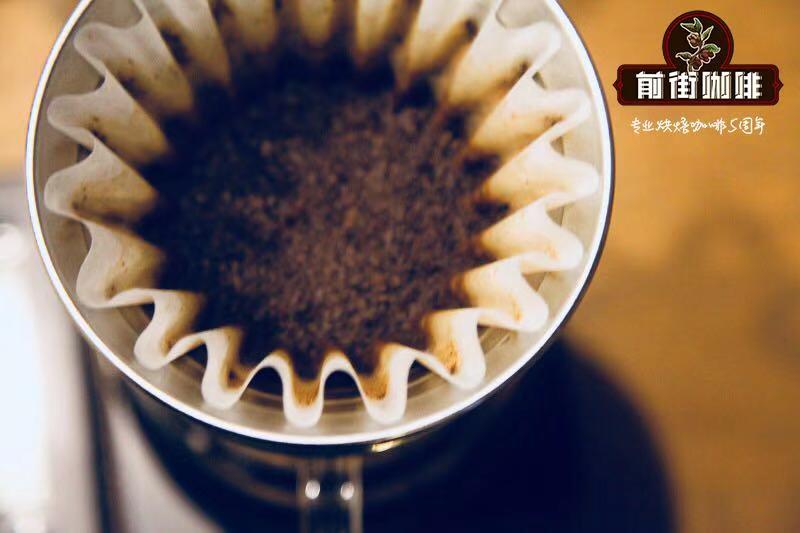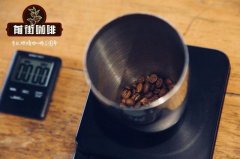What are the characteristics of Ethiopian coffee beans? introduction to the varieties and prices of Ethiopian coffee

Professional coffee knowledge exchange more coffee bean information please follow the coffee workshop (Wechat official account cafe_style)
Introduction to Coffee Street in Ethiopia
Harar)
Hara is located in the Eastern Highlands of Ethiopia (Harerge Province) and grows between 5000 and 7000 feet above sea level. A century ago, it was still wild on the slopes. Most of the raw beans are medium size and long at both ends, with yellow or golden green color, strong chocolate smell when baking, wild taste with moderate acidity and rich texture. It is a very typical mocha flavor. Good Hara has jasmine scent. And similar to the aftertaste of fermented wine, to some extent, the Mattari close to the BaniMatar area of Yemen is better.
Today, Hara still treats raw beans in the traditional sun, which is usually exported to the neighboring town of DireDawa, with an annual output of about 185000bags/60Kg, of which long beans (Longberry, evolved from the early Elaraby tree species,) and most of the specifications are G5 (Grade5) or G4. Unfortunately, good haras are often smuggled to Yemen and sold at higher prices for mocha beans.
When drinking, in addition to a single product, its rich taste and wine acid can also be used as the base of espresso.
Gima (Djimmah)
Gima, which accounts for about 50 per cent of Ethiopia's annual output, grows between 4400 and 6000 feet above sea level in the country's southwestern highlands (the border between Kaffa and Illubabor provinces) and is usually exported to G5/G4.
However, in recent years, about 10% or 20% of Gima has been used to make up for the lack of taste of coffee, but its quality has gradually declined to its own level, but there are bipolar comments on coffee buyers (my friend only uses Gima as the base of espresso in his store, and its strong flavor surprises me). The coffee is like a hara, following the ancient way of sunburn. It is also a little sour but slightly inferior to Hara, with medium texture and rugged earthy taste.
Ghimbi & # 39; Lekenpuri (Lekempti)
Growing in western Ethiopia, 4900-5900 feet (Wollega province) plateau, north of Jima, mostly wild, annual output is about 500000bags/60kg, export is mostly G5/G4, bean body is larger and longer than Longberry, a little brown in green, taste similar to less jasmine tea, more bitter, lack of rising Hara, slightly sour, slightly fruity and wine aroma, but slightly inferior to Hara, but with good texture and viscosity. So the beans in Jinbi District are jokingly called "poorman'". SHarar ".
The taste is complex but balanced, with better throat rhyme in deep culture and longer back sweet. It is one of the materials that many bakers like to use as comprehensive beans. Of course, it can also be used as a good single product, suitable for drinking after meals.
Lim (Limu)
Growing in the western highlands of southern Ethiopia (the border between Shewa and Sidmo), east of Jima, north of Sidamo, most Europeans and Americans prefer 3600-6200 feet above sea level, most of them are washed with water, their annual output is about 110000bags/60kg, most of them are round (15/16scr), the color is green and bluish, the export is mostly G2, the taste is similar to Yegashev, but the viscosity is thin, but the fragrance of flowers and fruit are obvious. The sour taste is also softer than Yegashev, the more irritating acidity, the aftertaste is similar to the wine, and has a good and balanced quality. it is a noteworthy Ethiopian boutique coffee after Yegashev, but almost all limes are vertically integrated and exported by Ethiopian coffee organizations, so it is almost rare to see them in China.
It is heard that this kind of baking is more suitable for air flow medium baking, not suitable for deep baking, and the better flavor after baking is two to three days. In fact, the good Lim is on a par with Yegashev (this is actually a subjective consciousness of different opinions).
Sidamo (Sidamo)
Growing in the southernmost Ethiopian plateau at an altitude of 4600-7200 feet (Sidamo province), southeast of Jima, just south of the capital, usually sweet, but also loved by most people, its annual output is about 225000bags/60kg, bean body is smaller than Longberry, green with ash, in the Sidamo sun drying field, coffee is placed in hemp net wooden racks, workers take turns in the sun exposure, manual stirring coffee Sun Sidamo is usually marked with G4 exits, while water-washed Sidamo has more G2 exits because of its better sun treatment.
The taste of the sun is close to the smell of flowers, but it is about a little earthy. Water washing has a nutty fruit aroma with a slight cocoa aroma, but what the two pieces have in common is smooth taste and viscosity, comfortable and pleasant acidity and fragrance. Medium roasting is suitable for individual products, while deep roasting is suitable for blending coffee and good Espresso base.
Yega Xuefei (Yirga-Cheffe)
The origin of the name is made up of two parts, Yirga is a town name of Sidamo, which means stable, and Cheffee means municipality.
It grows in the southern Ethiopian plateau at an altitude of 5700-7800 feet above sea level. It is located in the northwest of Sidamo province and around Lake Abaya. It usually tastes sweet and is liked by most people. Its annual output is about 225000bags/60kg. The bean body is smaller than Longberry, and it is greenish and gray in color. Most of it is washed. In the washing plant, after the coffee fruit is actually harvested, it is fermented in a storage tank full of water, and the workers use a simple wooden rake to stir it to facilitate the smooth cleaning. The washing plant always has a pungent acid fermentation smell and the sound of the fruits in the sink colliding with each other. After the fruit is sticky and soft, it is directly shelled and cleaned, leaving only the fruit covered with sheepskin. After the final washing, the fruit is dried directly outside the washing plant.
A complex with a taste similar to lemon and citrus, with excellent viscosity and complex flavor (I think it is sometimes suspected of being overemphasized and exaggerated because of its loud name, even though I like its flavor). Most of them are exported to G2, suitable for medium baking as a single product.
A bag of 60 kilograms of coffee beans, which has reached 7.1 million bags in the past year, will be relatively optimistic if new trees are put into production and planted in the next five years. But at the same time, climate change and impact is also a long-term issue that all of us have to face.
The Ethiopian government and a number of non-governmental organizations and research centres are helping to implement these changes. Adugna Debelabot, director-general of the Ethiopian government, said in a recent interview in Kigali, Rwanda: marketing reforms are helping producers skip certain stages of the supply chain. This will help increase the income of farmers who currently earn about 60% of the price of coffee, he said. At the same time, he said that under the new reform, farmers can export directly and freely, and Ethiopia is also actively creating awareness for farmers, which will be achieved in the current production year.
At the same time, Ethiopia exports most of its coffee beans to Europe and the United States, and tries to open up new markets in Asia, especially China, South Korea and Japan. China is likely to account for half of Ethiopia's shipments, he said.
END
Important Notice :
前街咖啡 FrontStreet Coffee has moved to new addredd:
FrontStreet Coffee Address: 315,Donghua East Road,GuangZhou
Tel:020 38364473
- Prev

The characteristics of Sidama coffee beans in Ethiopia's famous boutique coffee producing area introduce the flavor and taste of Huakui coffee beans.
Professional coffee knowledge exchange more coffee bean information please follow the coffee workshop (Wechat official account cafe_style) the front street introduction of Ethiopian coffee southern Ethiopia has grown a rich and complex Sidamo coffee (or Sidama), rich and distinctive taste. Sidamo
- Next

Yerga Shefi Coffee Producing Area Features What is Yerga Shefi Coffee Bean Flavor Features Brewing Introduction
Professional coffee knowledge exchange More coffee bean information Please pay attention to Coffee Workshop (Weixin Official Accounts cafe_style) Front Street Introduction: Yejia Xuefei Coffee: Named after the place of production: Coffee produced in Ethiopia (North African country) Yejia Xuefei (a local town). Yerga Shefi Coffee is Ethiopian
Related
- Beginners will see the "Coffee pull flower" guide!
- What is the difference between ice blog purified milk and ordinary milk coffee?
- Why is the Philippines the largest producer of crops in Liberia?
- For coffee extraction, should the fine powder be retained?
- How does extracted espresso fill pressed powder? How much strength does it take to press the powder?
- How to make jasmine cold extract coffee? Is the jasmine + latte good?
- Will this little toy really make the coffee taste better? How does Lily Drip affect coffee extraction?
- Will the action of slapping the filter cup also affect coffee extraction?
- What's the difference between powder-to-water ratio and powder-to-liquid ratio?
- What is the Ethiopian local species? What does it have to do with Heirloom native species?

